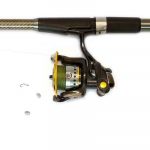Enjoying the great outdoors is one of the finest pleasures in life. Nothing is like being out in the wilderness and connecting with nature and your thoughts. There are many different ways you can engage with nature. One of the most adventurous is getting out in the bush.
To explore the bush, you must have a well-kitted bushcraft backpack. Bushcraft is much different from backpacking, so you must learn how to make a bushcraft backpack because when you are in the bush, you never know when your backpack might fail. Knowing how to build your own DIY backpack can keep you safe.
Don’t worry; it is not as intimidating as it seems. Keep reading to learn about the nuances of bushcraft and the perfect loadout for your bushcraft backpack.
Bushcraft vs. Backpacking
At first glance, bushcraft and backpacking may seem similar. After all, both activities involve spending time in the wilderness. But there are some significant differences between the two.
One of the most significant differences is that bushcraft involves more self-reliance than backpacking. As a result, you will need to carry more gear in your bushcraft backpack. Because you are more responsible for your safety and well-being, it is vital to have the right equipment.
Another significant difference is that bushcraft tends to be a more leisurely activity than backpacking. Therefore, you can take your time and enjoy the scenery on a day hike or multi-day trek.
That is not to say that backpacking is more arduous than bushcraft. Both require preparation, physical fitness, and self-reliance. The critical difference is how you approach your trip into the wilderness.

How to Make a DIY Bushcraft Backpack
You might need to make your DIY bushcraft backpack in several situations. You might be out in the wilderness, and suddenly, your backpack fails because it was damaged, you lost it in a fall, or perhaps an animal took it. Alternatively, you may want to build a bushcraft backpack for the fun and challenge of it.
Either way, you should be prepared to make your DIY bushcraft backpack as a measure of bushcraft safety. It would be best if you had several tools and materials you likely already have in your bushcraft kid.
What Tools Do You Need?
You will need a few essential tools for building your bushcraft backpack. Some of these items may already be in your bushcraft gear kit, so check before you go out and buy anything.
The primary tool you will need is a craft knife or saw. You can also use wire cutters or scissors, though they are not ideal for cutting the materials you will work with.
You will also need a tape measure, twine or rope, and a needle and thread. You may also find these tools helpful: pliers, glue guns/glue sticks, D-rings, and extra hardware.
What Materials Do You Need?
There are several materials you will need to build your bushcraft backpack. The best materials are waterproof and durable, as they will hold up better against the elements and wear and tear.
The most important material is a sturdy canvas or polyester tarp. You will also need to harvest some wood to build the frame. You can use wood from your bushcraft kit or look for branches from nearby trees. If you decide to use wooden sticks, make sure they are sturdy and dry so they do not break when carrying the backpack.
You may also want to consider adding a water-repellent coating for extra protection. Other materials to consider include leather, rope, and reflective tape. However, these materials are all additional and should be viewed as a bonus.
How to Make the DIY Bushcraft Backpack
If you follow these steps, you will have your DIY bushcraft backpack.
Find the Right Wooden Poles
The first step is to find suitable wooden poles for your backpack. Finding the right sticks can be challenging, as you likely do not have pre-cut wooden poles in your bushcraft gear kit.
Start by looking around where you are building your backpack to see if any fallen branches can be used. You may also want to take a walk in the woods and look for suitable branches on trees.
You want to find branches at least ¾ of an inch thick, as these will be the strongest for your frame.
Measure and Cut Your Wooden Poles
Once you have found a few suitable branches, it is time to measure and cut them. You will want to cut your poles several inches longer than your planned backpack height.
Use a tape measure to mark how long you want each branch, and then use wire cutters or a saw to cut it down. You may also want to use a craft knife or scissors if you need to make some final cuts in the branches.
Make the Cross Pieces of the Frame
Once you have cut down your wooden poles, it is time to make the cross pieces of the frame. You want to attach two horizontal poles to each vertical pole, connecting the two at a 90-degree angle.
Use either glue or wire to connect the cross pieces to each side of the frame. The frame should be sturdy and able to support the weight of your bushcraft backpack when completed.
Attach the Lash
Next, you want to attach lash points to the completed frame. These will be how you tie your backpack onto the frame. Use either twine or rope lengthwise along the top and bottom of the frame to create lash points.
You can then tie your backpack onto the frame with twine or rope.
Add the Straps and Closures
You will want to add straps and closures to your bushcraft backpack. You can use a needle and thread to stitch any closures onto the backpack. The closures are essential to keep your food dry.
Alternatively, you can attach plastic buckles to your straps and closures for an accessible alternative. The plastic clips will allow you to connect and unclip your bushcraft backpack from the frame quickly.
Add a Waterproof Cover and Any Additional Features
Finally, you will want to add additional features to your bushcraft backpacks, such as a water-repellent layer or reflective tape. You can do this by gluing these layers or sewing them onto the bag.
You can add any other features you would like, such as D-rings for extra gear, pockets for organization, or even a bottle opener!
FAQ
These are some commonly asked questions about bushcraft backpacks.
How do you make a wood pack frame?
There are several different techniques for making a wood pack frame. One option is to use a wooden dowel or board as the base and then secure it with leather or rope using various knots. Another option is to use branches or saplings to create a frame and then cover this frame with canvas or another sturdy material.
How do you make a pack frame?
There are several different ways to make a pack frame, depending on how you want to use your pack and how much time and materials you have available. For example, you could use wood or aluminum poles to make a pack frame or a wood or plastic base and then cover it with a water-resistant material, like canvas. You could also use wire or plastic to create a rigid structure that can hold your pack’s load.
Summary
Once your DIY bushcraft backpack is complete, you can hit the trails and explore the wilderness. Whether you are looking for a daypack or a larger bag that can hold everything, a DIY bushcraft backpack can be just as functional as the one you buy in a store.
Have you built a DIY backpack before? Let me know about your experience in the comments below.




